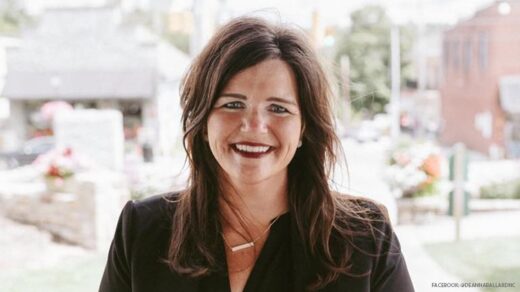Roy Horn, Little Richard, and Life in the Half-Closet
As I’ve mentioned before, I met Liberace twice in my life, which is kind of strange for a kid from Pittsburgh. Once at 6 years old, and the second time when I was 20, so at that point, I assumed he was gay. Or was he straight and just a bit showy?
And when he returned the envelope I asked him to autograph with the note “To John, with love, Liberace,” I ran away as fast as I could. Love? Oh, is he in the closet just like me? Or was the ostentatious use of “love” a deliberate attempt to confuse me about who he was?
Recently, we saw the passing of two equally talented and very flamboyant performers, Roy Horn of Siegfried and Roy, and Richard Penniman, otherwise known as Little Richard. Each time I saw them on television, or read about them in the news, I felt the same sense of “are they gay?” that I did with Liberace.
In the end, it came as little surprise to learn that Liberace was gay, partly and tragically because he died of AIDS in the late 1980s, and the disclosure of the disease usually meant you were gay. As with Rock Hudson, who spent his entire life in the closet until he succumbed to AIDS like Liberace, it affirmed his homosexuality.
Other famous actors of Hollywood’s so-called golden era were also revealed to be gay or bisexual after their deaths, Rudolph Valentino, Vincent Price, and Raymond Burr among them. And some people are still on the fence about stars like Greta Garbo, Katharine Hepburn, Cary Grant, and Randolph Scott. For stars today who remain in the closet, there is still gossip and speculation, but no consciously living in between like Horn or Little Richard. You either are out or you’re not.
Horn and Little Richard may be the last of a dying breed who lived quasi-out lives, with the mere mention of their names sparking suspicion. Are they or aren’t they gay? It made me wonder if the era of stars operating and living their lives half in the closet might be over?
Back in the days of Valentino, Garbo, and Grant, studios and publicists went to great lengths to hide their stars and their clients’ gayness or bisexuality, and for the most part, their properties went along. There were the arranged marriages like Hudson’s to Phyllis Gates, and the straight-affair rumors that purposely circulated when the star’s heterosexuality was questioned.
The PR crush about Liberace’s infatuation and “romance” with skater Sonja Henie seems almost laughable in today’s world; however, there is some nostalgia left for these celebrities who existed during a time when the term “homosexuality” was a career death knell. Unfortunately for them, society was less than accepting if they dared to take the risk of having their flamboyance equated to being out, gay, and less than proud.
Now it’s different. Out and flamboyant performers like Adam Lambert, Sam Smith, and Billy Porter, for example, are A-listers and highly successful. They make the cagey, half-closet door open lives of Horn and Little Richard, who played peek-a-boo about coming out, seem almost antiquated.
Today’s stars come out earlier, experience much more tolerance and acceptance, and don’t see the point of being phony in a time of authenticity. Social media has provided celebrities with a more intimate, two-way means of communication with their fans, and those fans and followers demand legitimacy.
And apps and sites like YouTube and Tik-Tok have spurred a new and different type of celebrity for today’s young adults, who are less concerned with traditional A-list stars that have more appeal to people in their 30s and above.
The once-huge teen YouTube star Logan Paul saw his status tumble after proclaiming he would “go gay for a month,” with intense condemnation from the social sphere pointing out that that is not how it works. And gay YouTube star James Charles saw his following plummet after several incidents revealing his inauthenticity. If you disparage gayness and you are a shifty gay, you are canceled.
Between Hollywood’s golden age and the social media epoch, lies a group of actors and performers who are caught in the middle, those who are middle-aged and came into stardom in the late ’80s and ’90s, when coming out was still career-threatening, tantamount to exclusion, and if you were a man, put you at risk of being labeled as someone with AIDS.
The coming-out process for them as well for many of us at their age and at that time was consequential and arduous during a period when being gay still provoked adverse connotations. Just as Ellen DeGeneres was coming out in the late ’90s, Americans were coming off the negative and homophobic drama around the “gay crush” crime resulting from the Jenny Jones talk show. From the late ’80s to the late ’90s, being gay was still looked at as not normal, a novelty, out of the mainstream, a sideshow or scandalous talk show fodder.
As a result, there are still many famous folks over 50 who have seemingly locked and barricaded the closet door. As they have aged, their fear of coming out still exists, juxtaposed with the opportunity to come out, which they may fear appears awkward and hypocritical at a certain juncture.
Those of us of a certain age have a list of names in our heads of those celebrities who we’ve heard so much about over the years, yet still maintain their distance from their true selves and continue to hide in the closet. For them, coming out now is a double-edged sword.
First, just as social media has helped launch and sustain today’s gay celebrities, its intrusiveness makes it much more difficult for older ones to try to hide, and if they do come out, look insincere. That, and if a celebrity in middle age, who has married and had children, and is romantically linked to the opposite sex comes out now, they run the risk of not only being late to the game, but inauthentic in a world of social media openness.
How forgiving would we be to those who come out in their mid-life? Are they looked at with shame? Or are they still courageous? Does their revelation elicit cries of cowardice? How do they set the record straight about not being straight for all those years? Do they become unbankable at the box office? Is their reputation ruined? Is it a big deal to them but of little consequence to us? Would today’s generation simply cancel them?
With all these questions inevitably swirling about, it’s most likely that these celebrities in question will avoid speaking honestly about their sexuality and continue to hide. As they get older and eventually die, the truth will invariably come out. It always does and may yet for some while they’re still alive, but most likely after some time has passed after their passing, the speculation and the stories will arise and confirm.
But, in the meantime, they won’t act in the teasing manner of a Roy Horn or Little Richard.
Have we seen the last of these in, out, in, out flamboyant celebrities? One foot in, one foot out while both feet danced back and forth over the gay/straight line? Being pseudo-gay in the public eye enough to sustain intrigue about their lives all their lives? All the hugger-mugger and muddle making them more fascinating?
Perhaps we’ve seen the last of the half-closet. Horn and Little Richard came to fame during a time and place where our kind of love did not speak its name. The group after them, when the love we know was less — but still — salacious. And the generation today, free to be who they are. Today’s celebrities don’t play trickery with their sexuality. The closet door is either wide open or shut, and not left slightly ajar. And that’s either good or bad, since being in between doesn’t seem to exist anymore.
John Casey is a PR professional and an adjunct professor at Wagner College in New York City, and a frequent columnist for The Advocate. Follow John on Twitter @johntcaseyjr.
Original Article on The Advocate
Author: John Casey




